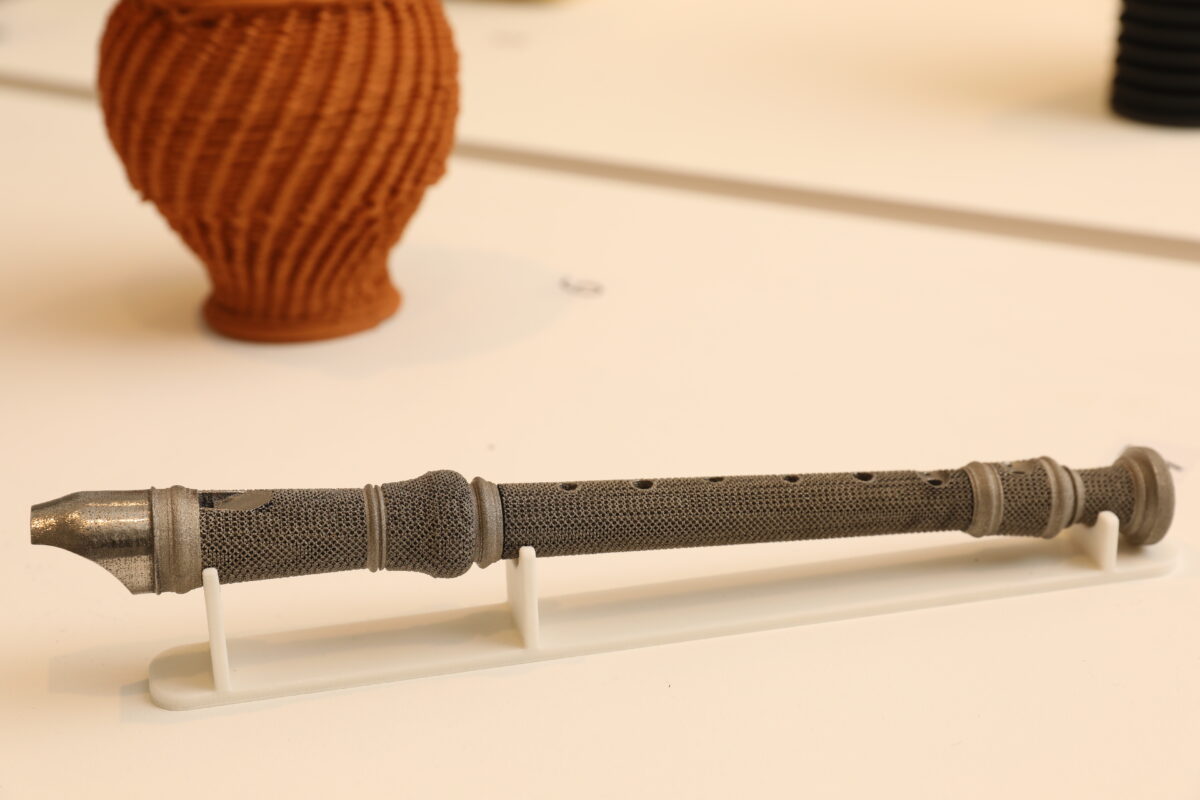
Anastasia Kolomiets
Masters degree program
Supervisors
Prof. Ezri Tarazi
Prof. Yasha Grobman
Bio
Anastasia is an MDes student, working on additive manufacturing for industrial design application. During the graduate studies, she has obtained a high level of competence in the Industrial design, materials and marketing aspects; development and evaluation of efficiency of new and existing technologies, design of new technological production chains including an expertise in state-of-the-art in metals and polymers 3D-Printing. Anastasia holds a MA in Graphic Design from the Ural State Architecture and Art Academy: Ekaterinburg, Russia. The MA graduate project: Graphic automobile styling as an element of product promotion, on the example of “AVTOVAZ” production. The thesis was devoted to automotive graphics as a marketing tool. She also has a BA degree in theatre decoration art from Ekaterinburg Art College named after Shadr. Studying in Art School gave to Anastasia the great academic training in drawing and painting. These studies still support her work and in her study. She also have such studies as technique of a scene, bread boarding, working with different materials and theater design. During her studying in college, she worked in the theater, applying her theoretical knowledge in practice.
In her MDes research, Anastasia aims to propose approach of application of metal additive manufacturing for new products, by exploring all steps of the design and production of newly manufactured 3D-printed Titanium flute.
Application of Titanium Additive Manufacturing for Industrial Design Development on example of 3D-printed Ti-Flute.
The research aims to explain the benefits of titanium additive manufacturing (Ti-AM) technology and material itself for the industrial design of new products. Up to now, AM application was limited to prototyping. Using Ti-AM and superior mechanical properties of Titanium, the final product can be manufactured. Example of the Ti-AM potential was shown by manufacturing of 3D-printed flute confirming that it can be used as a fabrication technique for musical instruments. According to performed systematic review, it was found that there were several previous attempts to apply 3D-printing for producing of a flute. However, all of them used polymer-based techniques. Metals are beneficial for wind instruments. Moreover, in Ti-AM, you can produce a single part with internal complex structure. Alternatively, you can produce the component part and work on a proper assembling. Future work will be concentrated on the comprehensive analysis of musical/acoustic properties, and ways of flute’s design-concept development.

Keywords
Industrial Design; Additive Manufacturing; 3D-printing, Titanium, Graphic Design
Publications
1. V. Popov Jr., G. Muller-Kamskii, A. Kovalevsky, G. Dzhenzhera, E. Strokin, A. Kolomiets, J. Ramon. Design and 3D-printing of titanium bone implants: brief review of approach and clinical cases, Biomed. Eng. Lett. (2018) 8: 337. https://doi.org/10.1007/s13534-018-0080-5
2. Kolomiets A., Popov V., Strokin E., Muller G., Kovalevsky A. Benefits of Additive Manufacturing for Industrial Design Development. Trends, Limitations and Applications. Global Journal of Researches in Engineering: J. 18(2), (2018).
3. Kamsky G.V., Kolomiets A.A., Popov V.V., Review of the main producers of 3D-machines for metals, characteristics of the machines, and directions of development. Research Journal of International Studies, №8(50) (2016).
4. Kolomiets A.A. et.al. Our future in additive manufacturing. Science without borders, conference-paper. May 2016
Relevant links
https://scholar.google.co.il/citations?user=8n9XDBkAAAAJ&hl=en
https://www.researchgate.net/profile/Anastasia_Kolomiets
https://www.linkedin.com/in/anastasia-kolomiets-98a346124/
Interest
• Additive manufacturing and 3D-printing
• Titanium alloys for musical instruments.
• Industrial Design, Graphic Design, Design Thinking.
• Art techniques: oil painting, airbrushing, drawing
Personal mail

